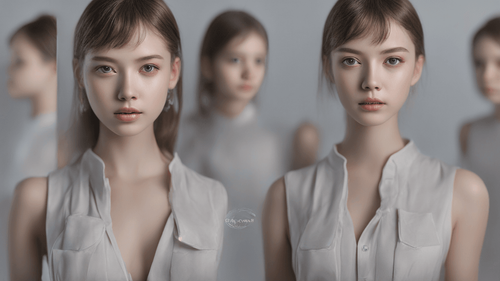
Introduction
In today's digital age, where visuals have become a ubiquitous language of communication, the emergence of AI image creation has marked a revolutionary turning point. This cutting-edge technology has not only redefined the way we perceive and interact with images but has also transformed the landscape of creative design. From generating stunning artwork to aiding in marketing campaigns, AI image creation is a game-changer that's here to stay.
AI Image Creation: Unveiling the Future of Visuals
Understanding AI Image Creation
AI image creation refers to the application of artificial intelligence techniques to generate, manipulate, or enhance images. It harnesses the power of deep learning algorithms, neural networks, and massive datasets to mimic human creativity and produce visually captivating content.
The Importance of AI in Visual Content Creation
The integration of AI into image creation offers unparalleled advantages, including improved efficiency, enhanced creativity, and cost-effective solutions. By automating repetitive tasks and suggesting innovative ideas, AI empowers designers and artists to push the boundaries of their creativity.
Benefits of AI Image Creation
-
Time Efficiency: AI-driven image creation expedites the design process, allowing artists to allocate more time to refining their work.
-
Variety and Versatility: AI algorithms can produce a wide range of styles, catering to diverse artistic preferences and design requirements.
-
Data-Driven Insights: AI analyzes trends and user preferences, enabling the creation of visually appealing content that resonates with target audiences.
-
Real-Time Adaptation: AI can dynamically adjust images based on changing contexts, ensuring relevance and engagement.
-
Enhanced Customer Understanding: AI-generated images can convey complex concepts more effectively, improving customer comprehension.
-
Risk Mitigation: By experimenting with AI, designers can test ideas before investing significant time and resources.
Applications of AI Image Creation
AI image creation finds application across various domains, including:
-
Art and Aesthetics: AI-generated art challenges traditional norms and offers fresh perspectives.
-
Marketing and Advertising: AI-crafted visuals enhance brand communication and drive customer engagement.
-
Entertainment and Gaming: AI creates immersive visuals, enriching user experiences in entertainment and gaming industries.
-
E-commerce: AI-generated product images improve presentation and boost online sales.
Harnessing AI Image Creation: Techniques and Tools
Generative Adversarial Networks (GANs)
GANs are a prominent technique in AI image creation, involving two neural networks – a generator and a discriminator – that work in tandem to create authentic images.
Neural Style Transfer
This technique combines the style of one image with the content of another, resulting in unique and captivating visuals.
Image-to-Image Translation
AI can transform images from one domain to another, such as converting a sketch into a realistic image.
Top AI Image Creation Tools
Several tools have emerged as frontrunners in AI image creation, including:
-
DeepDream: Google's open-source tool that transforms images into surreal and dreamlike creations.
-
Runway ML: A user-friendly platform that democratizes AI image creation for artists and designers.
The Future Landscape of AI Image Creation
AI-Powered Creativity Augmentation
As AI image creation continues to advance, it will empower creators to amplify their artistic capabilities, leading to a new era of collaboration between humans and machines.
Personalized Visual Experiences
AI-driven customization will enable tailored visual content, resonating with individual preferences and driving engagement.
Ethical Considerations
With great power comes great responsibility. The ethical implications of AI image creation, such as copyright concerns and potential misuse, must be addressed proactively.
FAQs about AI Image Creation
What is AI image creation? AI image creation involves using artificial intelligence to generate, manipulate, or enhance images through advanced algorithms.
How does AI contribute to creative design? AI accelerates the design process, offers diverse styles, provides data-driven insights, and enhances customer understanding.
Can AI-generated art match human creativity? AI-generated art is a new form of creativity, blurring the lines between human and machine-generated aesthetics.
What industries benefit from AI image creation? AI image creation finds applications in art, marketing, entertainment, gaming, and e-commerce.
Are AI-generated images legally protected? Copyright and ownership of AI-generated images raise complex legal questions that require careful consideration.
What precautions should be taken when using AI image creation tools? Users should be aware of potential biases in AI algorithms and ensure proper attribution for generated content.
Conclusion
AI image creation is reshaping the way we perceive, create, and interact with visual content. With its transformative impact across industries and its potential to unlock unprecedented creative possibilities, AI image creation stands as a testament to human innovation and technological progress. As we navigate this exciting journey, it's essential to balance the promise of AI with ethical considerations, ensuring a harmonious coexistence between human ingenuity and artificial intelligence.